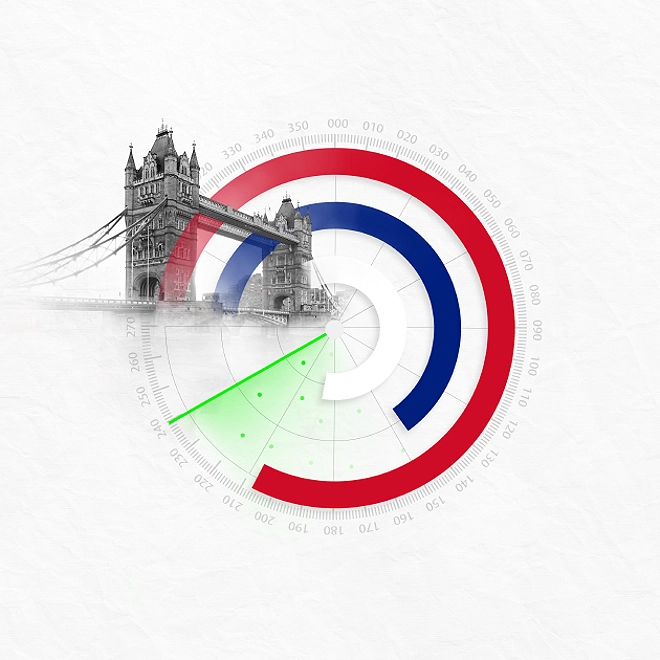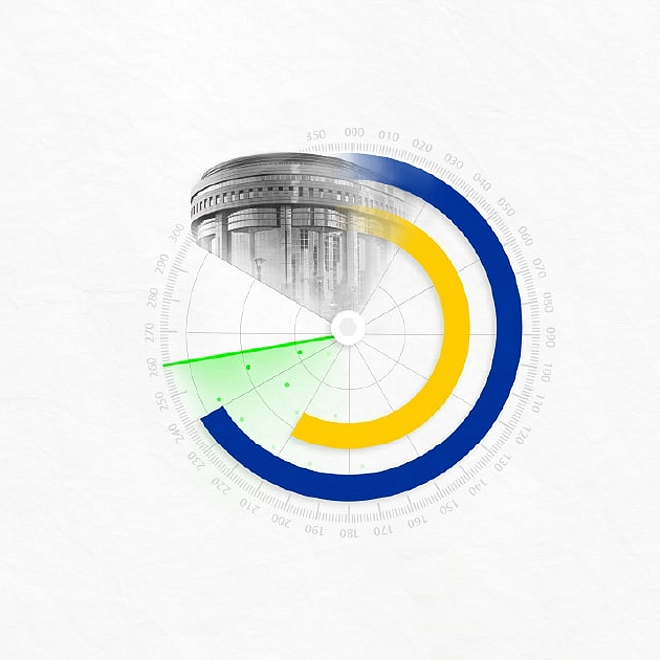Brazil
The pandemic continues to cast a shadow
Brazil labored through its deepest economic downturn in recent memory in the first half of 2020. And while the economy witnessed a recovery of sorts in the second half, the scars of the pandemic still run deep. A surge in new COVID-19 cases this year has again soured sentiment and weighed on economic activity.1 With the pandemic continuing with its volatile trajectory, vaccination numbers still low relative to the population size, and rising inflationary pressures, it is unlikely that private consumption will witness a strong surge in growth soon. Businesses too have been affected by the pandemic, with sentiment bruised and earnings dented, especially in the services sector.2 With policymakers now almost empty of any fiscal or monetary firepower after a year of stimulus, further policy support is unlikely. The path to a near-term recovery, therefore, likely lies in faster vaccinations to gain control over the pandemic, thereby allowing consumers and businesses to operate freely and without fear. Even if that happens, it will only be half the battle won. For Brazil, the path to higher potential growth in the long term lies in more reforms.
Investments came to the rescue in Q1 even as consumption faltered
The economy continued its recovery path in Q1 2021, but at a slower pace compared to the previous two quarters. Real GDP grew by 1.2% quarter on quarter in Q1 2021,3 with intermittent lockdowns in March due to rising virus cases—such as in the two biggest cities, Sao Paulo and Rio De Janeiro4—weighing on economic activity. The surge in cases dented key services sectors. Mobility at retail and recreation stores, for example, in March was 40% below levels witnessed in January 2020.5 Private consumption fell by 0.1% in the quarter, with government spending also taking a hit during this period (figure 1).
The boost to growth in Q1 came from business investment—gross fixed capital formation grew by 4.6% in Q1—which expanded for the third straight quarter. The economy also found some support from exports, which grew by 3.7% during the quarter. Overall, with the third successive quarter of growth, the real GDP in the first quarter was almost back to end-2019 levels. Nevertheless, 2020 marks a major setback to policymakers’ efforts over the prior years to steer the economy back to a path of strong growth last witnessed in Q1 2014 (figure 2).


High inflation and a hit to real incomes have added to consumers’ woes
The absence of a strong labor market revival, elevated price pressures, and continued health-related worries mean that the fortunes of consumers haven’t improved much over the past year. The unemployment rate remains high (14.7% in April) relative to prepandemic levels (11.0% in December 2019).6 And although workforce participation has been edging up since September 2020, at 56.9% in April 2021, the rate is still five percentage points lower than what it was at the end of 2019. Low workforce participation can not only weigh on near-term consumer sentiment and spending but will also likely impact medium- to long-term economic growth.
Adding to employment worries is weakness in earnings and income since the last quarter of 2020 (figure 3). While nominal earnings have edged slightly down during this period, rising inflation has pulled real earnings down further. Inflation has been rising steadily over the past year—it was 8.1% in May—and has been above the upper limit of Banco Central do Brasil’s (BCB’s) target range since March this year.7 While food and fuel prices have contributed to wider inflation, BCB will also likely be worried about rising core inflation, which moved up to 4.2% in May. With nominal earnings subdued and inflation heading up, real average earnings fell for the first time in April since February 2020. Research by the Getulio Vargas Foundation (FGV) shows that Brazilians’ per capita income fell by 11.3% year over year in Q1 2021 to 995 reais, the lowest level in a decade.8 The pandemic has also dented years of progress in poverty alleviation in Brazil. According to a study by FGV, 12.8% of Brazilians are now living below the poverty line, up from about 11% in 2019.9
Given this scenario, it’s not surprising that real private consumption fell in the first quarter of this year with spending levels still 3.1% below what it was at the end of 2019. The persistent impact of the pandemic on incomes, especially for low-income households most affected by the surge in infections early this year, prompted policymakers to revive the federal emergency cash transfer program in March.10 While the program is expected to provide vulnerable informal sector workers about 250 reais per month from April to September,11 this is likely just a small and temporary boost to consumption in the near term.

Manufacturing continues to fare better than services
As consumers continue to shy away from spending on certain services due to economic and health worries, revenues of key sectors such as tourism, aviation, hospitality, entertainment, and food services, remain under pressure. Data from the Brazilian Institute of Geography and Statistics’ monthly index shows that revenues of highly impacted sectors in 2020 have not rebounded to prepandemic levels.12 For example, revenues of air transport services were 56.2% lower in April 2021 relative to December 2019, while accommodation and food services revenues were down 39.7% during this period. While the Purchasing Managers’ Index (PMI)13 for services points to an uptick in output in June, business confidence levels continue to trail their long-term average.14
While manufacturing hasn’t escaped the pandemic unscathed, the sector has fared better than services. Manufacturing output, for example, picked up pace after a deep shock in April 2020 before weakening in the first four months of this year—most likely due to a surge in virus cases.15 And although output rose in May, the sharp declines in the two prior months show how the pandemic continues to cast its shadow of uncertainty across major sectors in the economy. No wonder then, that, although confidence among manufacturing businesses point to net optimism, overall levels of confidence are still lower than the peak of December 2020.16
The pandemic will likely continue to weigh on economic activity until vaccinations rise sharply
Economic activity is expected to recover only modestly in the near term as COVID-19 continues to weigh on consumer sentiment and health infrastructure. The number of active cases has not eased since the beginning of the year, especially with the emergence of a new Gamma variant of the virus.17 Virus cases peaked in March and April, with the health infrastructure coming under severe strain during this period. And although cases have declined slightly after April (figure 4), the number of new virus cases is edging up again. In June, the daily average of new cases was 316 per million, up from 286 per million in May.
While a gradual relaxation of social distancing restrictions since April18 will provide some succor to consumers and businesses, they will still have to contend with considerable uncertainty given the volatile nature of the pandemic. The scenario may, however, change if the pace of vaccination increases. Evidence from the United States, for example, shows that consumer sentiment and willingness to spend has gone up with rising vaccinations.19 In Brazil, however, vaccinations have been relatively slow. As of June 30, only 13% of Brazilians are fully vaccinated, with another 24% having received the first jab of a two-dose vaccine regimen.20 And shortages of vaccines relative to demand, even for those who are awaiting their second dose, will only add to worries for consumers and businesses.21

With policy options limited, a focus on reforms may help
As Brazil labors through these challenging times, additional fiscal and monetary support is unlikely. Additional fiscal support has its limits given budgetary constraints: The budget balance deteriorated to 13.6% of GDP in 2020 from 5.4% in 2019, while total federal public debt went up to 67.3% of GDP from 57.4% during the same period. And monetary policy has turned its attention to taming inflation this year from an accommodative stance in 2020. In June, the BCB raised its key policy rate for the third time this year to 4.25% to counter rising inflation. The rate move in June makes for 225 basis points worth of rate hikes so far since March.22
With stimulus options limited, reviving economic growth quickly depends on how the pandemic evolves. And the key to thwarting the spread of COVID-19 is raising the pace of vaccinations. Policymakers, however, still have the reforms trick in their bag, especially if they want to raise productivity and potential GDP growth over the medium to long term. In the World Bank’s ease of doing business rankings, Brazil ranks a low of 184 (out of 190 countries) in the ease of paying taxes, 134 in starting a business, and 108 in trading across borders.23 Maybe that’s where policymakers can start—simplifying the taxation regime, liberalizing the economy and cross-border trade, and increasing privatization. While that is unlikely to heal the immediate economic and emotional scars of COVID-19, it can help ensure that Brazilians are on a faster lane to prosperity when they come out of the pandemic.
Deloitte Global Economist Network
The Deloitte Global Economist Network is a diverse group of economists that produce relevant, interesting and thought-provoking content for external and internal audiences. The Network’s industry and economics expertise allows us to bring sophisticated analysis to complex industry-based questions. Publications range from in-depth reports and thought leadership examining critical issues to executive briefs aimed at keeping Deloitte’s top management and partners abreast of topical issues.
Learn More


